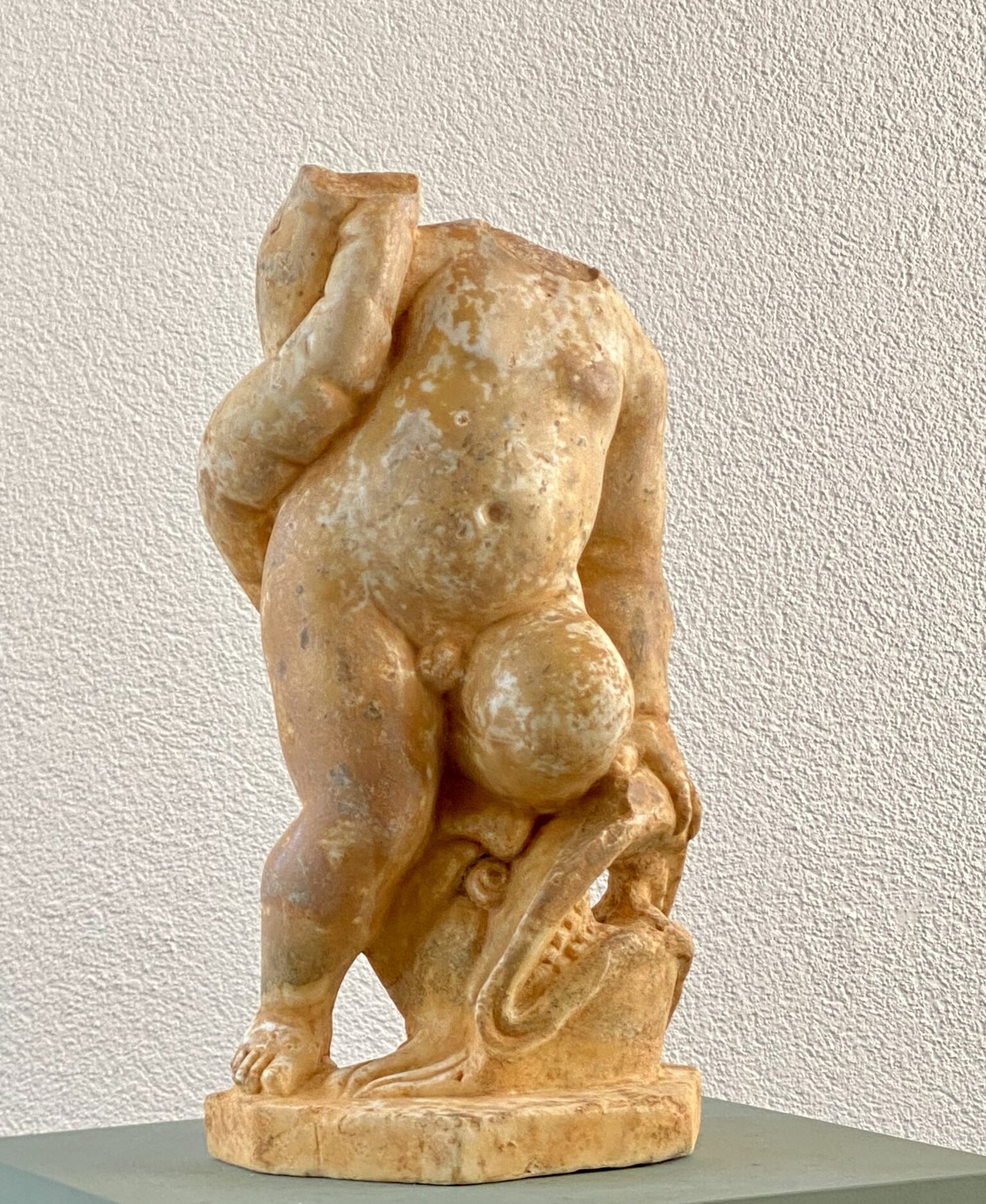Architectural design and interior decoration
A Fountain Sculpture of a Boy with Fish
Price on request
Marble
Roman, 1st century AD
H. 65cm
A marble fountain sculpture of a young boy with fish. with notably heavy sulfured patina, an evidence that the fountain’s water had a spa origin.
Cf. Balász Kapossy, Brunnenfiguren der hellenistischen und römischen Zeit, Juris Druck & Verlag Zurich, 1969;
E. Curtius, Brunnenfiguren im Museum zu Neapel, Archäologische Zeitung 1879, Tafel 1 , Boy with frog
Condition: Head of boy and tail of fish missing. Heavy sulfured patina.
Provenance: Formerly, in the estate-collection of a Swiss gentleman, Ticino, before 1970
Fountain sculpture: In ancient Roman art and architecture, fountains were often decorated with sculptures of young boys or putti holding fish. These sculptures were known as “putti with fish” or “boy with fish” and were a popular motif in the decoration of fountains. The young boy or putti was shown holding a fish or a shell, which would spout water into the fountain basin below. The fish was a particularly popular motif because it symbolized abundance, fertility, and prosperity, which were all important values in ancient Roman society. Overall, the putti with fish sculptures are a notable example of the art and architecture of ancient Rome and have continued to be an enduring symbol of beauty, abundance, and prosperity throughout the centuries. Archaeological excavations in Pompeii have revealed many examples of sculptures of putti with fish. The putti with fish sculptures from Pompeii were usually made of bronze, marble, or terracotta. They were often placed in the center of the fountain, surrounded by other decorative elements such as flowers, plants, and other sculptures. Many of these putti with fish sculptures are now on display in the National Archaeological Museum of Naples. The museum also houses a famous mosaic of a putto with a fish, which was discovered in the House of the Faun in Pompeii. The putti with fish sculptures from Pompeii and those in the Naples Museum provide valuable insights into the art and culture of ancient Rome. They demonstrate the importance of beauty and abundance in ancient Roman society and offer a glimpse into the everyday life of the people who lived in Pompeii over two thousand years ago.
Item reference: CL1561

